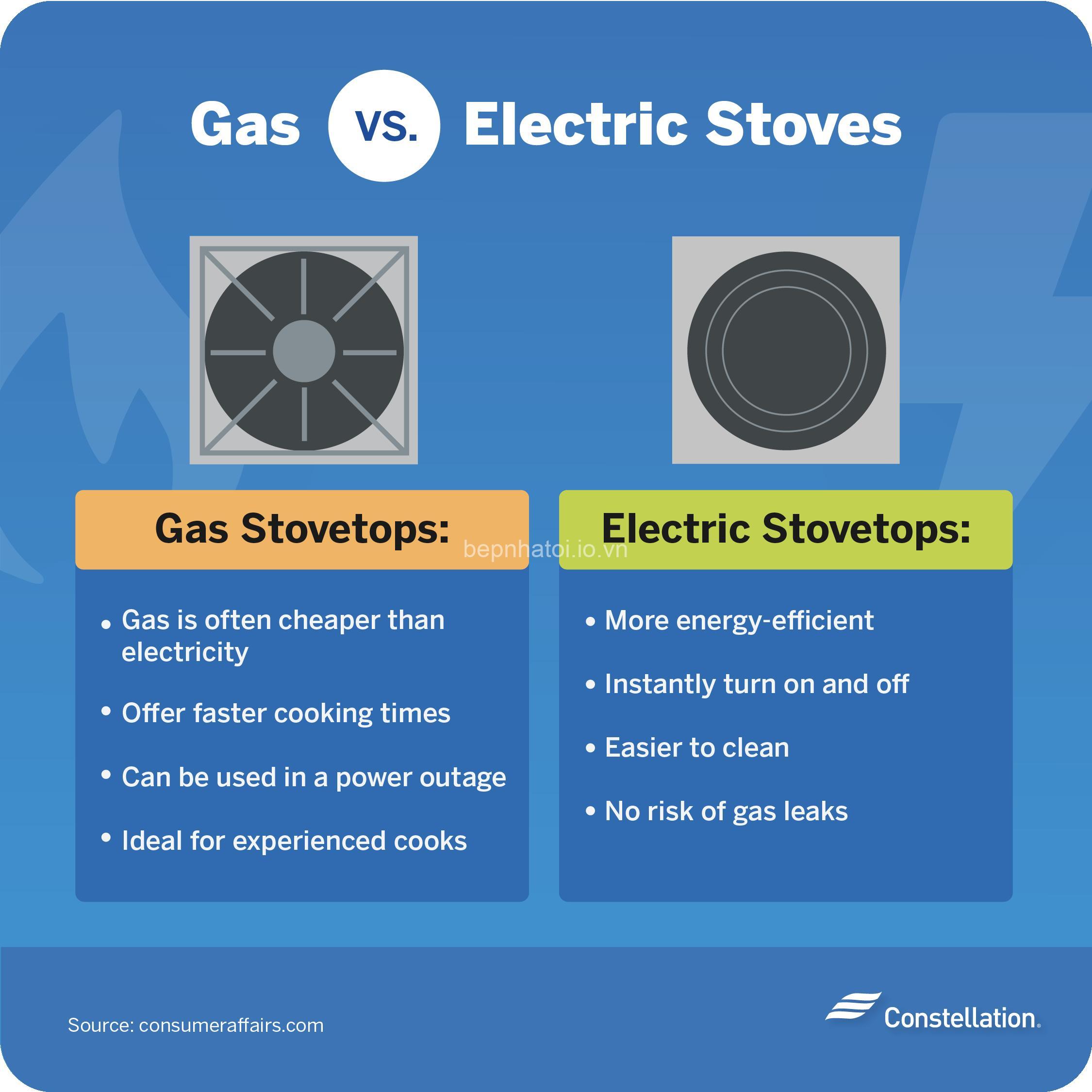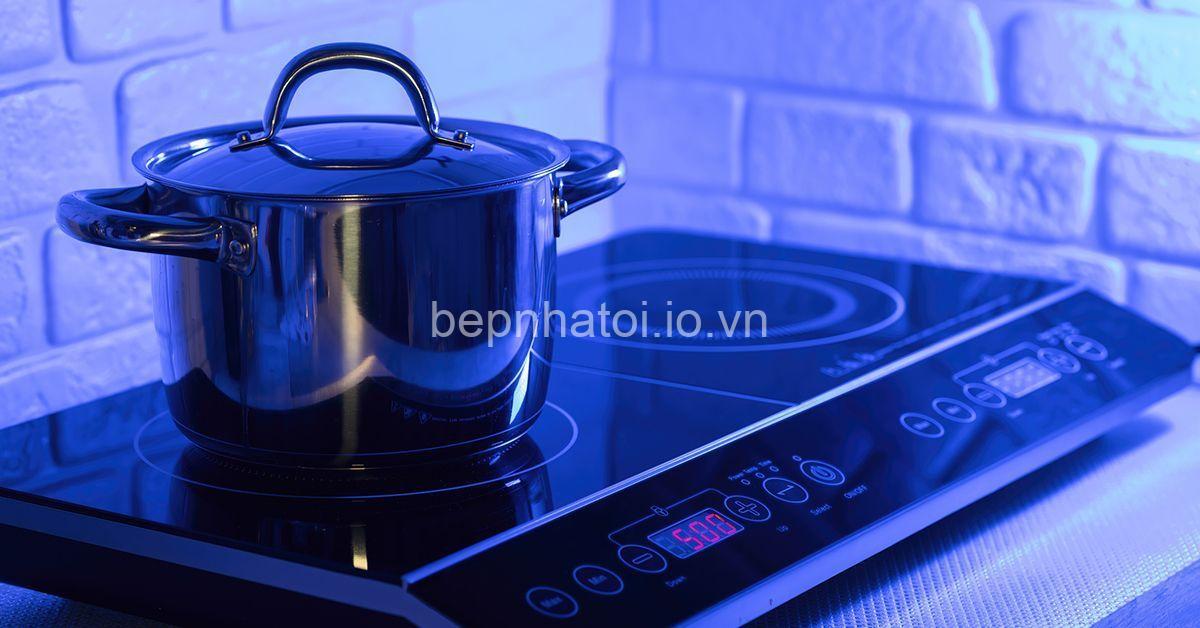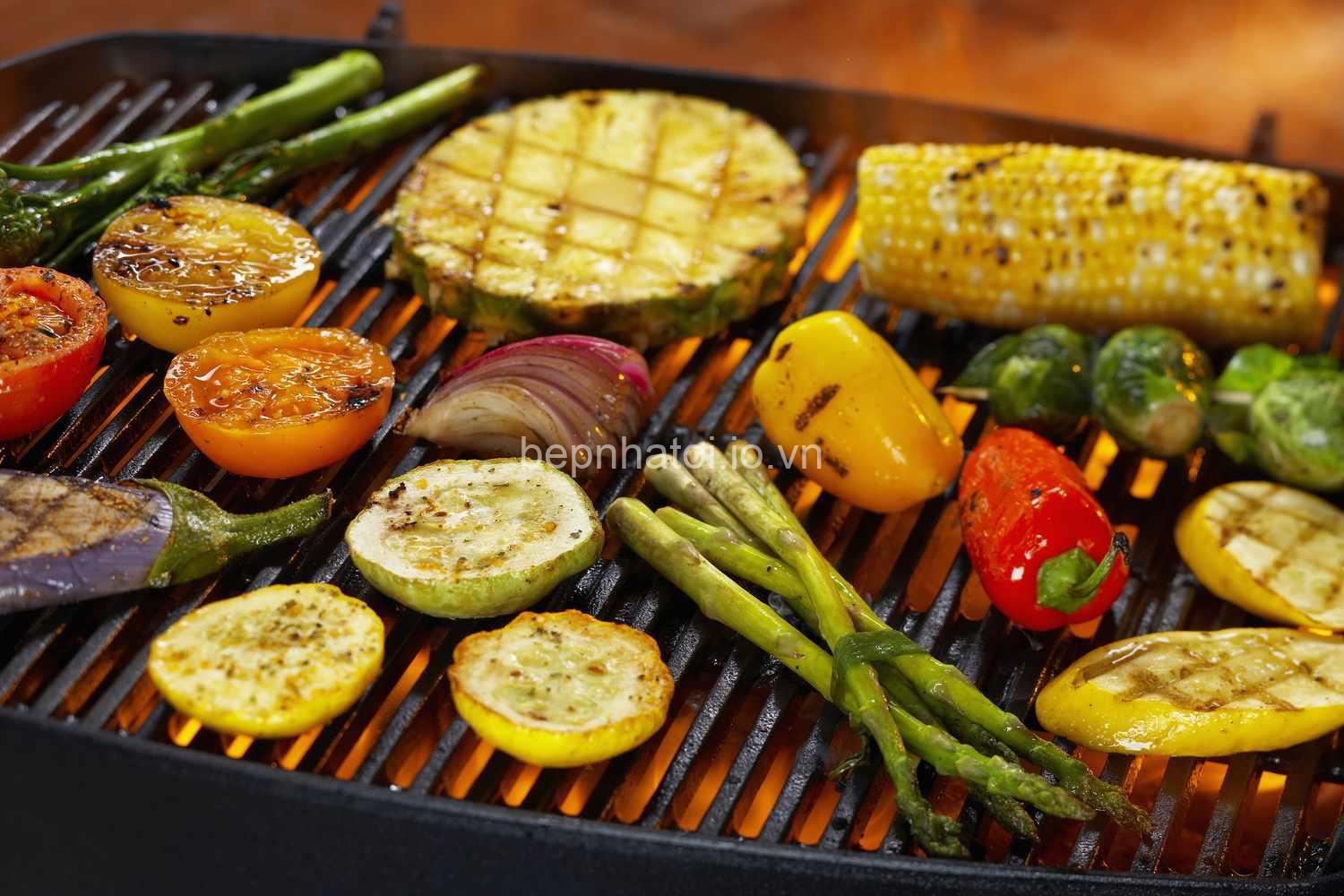
Electric vs. Gas Stoves: Which is More Energy Efficient?. In today’s article, bepnhatoi.io.vn will explore with you in the most detailed and complete way. See now!
Electric Stoves: Efficiency Advantages for Sustainable Cooking
How Electric Stoves Work and Their Energy Consumption: Electric stoves work by converting electrical energy into heat, which is then transferred directly to the cooking surface. Unlike gas stoves, there’s no combustion process involved, which means there’s less energy loss. The energy consumption of electric stoves depends on the wattage of the heating elements and the duration of use. For example, a standard electric stovetop burner might use 1,200 watts of power.
The Advantages of Electric Stoves:
-
Precise Temperature Control: Electric stoves allow you to precisely control the cooking temperature, making it easier to achieve the desired results. You can adjust the heat output with a dial or buttons, minimizing the risk of overcooking or burning food. This precise control also helps reduce energy waste, as you’re only using the amount of heat necessary for your cooking needs.
-
Induction Cooking: The Highest Efficiency Option: Induction stoves are a specialized type of electric stove that work by using electromagnetic induction to heat cookware directly. This method is incredibly efficient, as virtually all the energy is transferred to the cookware, resulting in faster heating times and minimal energy loss. Induction cooking is also safer than traditional electric stoves because the cooking surface itself doesn’t get hot.
-
Lower Heat Loss: Electric stoves generate less heat loss compared to gas stoves because the heat is directed towards the cooking surface. This means you’re using less energy to achieve the same results, making electric stoves a more eco-friendly option.
Understanding Energy Efficiency Metrics: Energy efficiency for stoves is typically measured in terms of energy consumption per unit of output. This can be expressed in kilowatt-hours (kWh) or British thermal units (BTUs). A stove with a higher energy efficiency rating consumes less energy to produce the same amount of heat.
The Role of Energy Source: The energy source powering your electric stove can significantly impact its overall efficiency and environmental impact. If your electricity comes from renewable sources like solar or wind power, then electric stoves contribute to a more sustainable lifestyle. However, if your electricity is generated from fossil fuels, then the environmental footprint of electric stoves will be higher.

Gas Stoves: Exploring the Trade-Offs
How Gas Stoves Work and Their Energy Consumption: Gas stoves work by burning natural gas, which produces heat that is then transferred to the cooking surface. The energy consumption of gas stoves depends on the size and efficiency of the burners, as well as the duration of use.
Disadvantages of Gas Stoves in Energy Efficiency:
-
Less Precise Temperature Control: Gas stoves can be more challenging to control than electric stoves, leading to fluctuations in temperature. This can result in overcooking or undercooking food, wasting energy and potentially affecting the quality of your meals.
-
Inefficient Burner Design: Some gas stove burners are more efficient than others. Older burners can waste energy due to inefficient combustion or uneven heat distribution.
-
Heat Loss: A significant amount of heat generated by gas stoves is lost to the surrounding air. This is because the heat is transferred through convection, which is less efficient than the direct heat transfer of electric stoves.
The Environmental Impact of Gas Stoves: Burning natural gas for cooking releases greenhouse gases, including carbon dioxide, methane, and nitrous oxide, into the atmosphere. These gases contribute to climate change, making gas stoves a less environmentally friendly option compared to electric stoves, especially when powered by renewable energy sources.
Advantages of Gas Stoves (Where They Exist):
- Lower Initial Cost: Gas stoves are often less expensive to purchase than electric stoves.
- Faster Heating: Gas stoves can heat up quickly, reaching higher temperatures faster than electric stoves. This can be helpful for certain cooking methods, such as searing or stir-frying.
- No Dependence on Electricity: Gas stoves can be a reliable option in areas with frequent power outages or unreliable electricity grids.
Comparing Electric and Gas Stoves: A Comprehensive Look
The Big Picture: Energy Consumption and Environmental Impact: Overall, electric stoves are generally considered more energy-efficient than gas stoves, particularly when powered by renewable energy sources. Electric stoves offer precise temperature control, lower heat loss, and often have higher energy efficiency ratings. However, the environmental impact of electric stoves depends on the source of their electricity. Gas stoves, while often cheaper upfront, are less efficient and contribute to greenhouse gas emissions.
The Importance of Energy Source: When comparing electric and gas stoves, it’s crucial to consider the source of the energy used to power each appliance. Electric stoves powered by renewable energy sources have a significantly smaller carbon footprint than those powered by fossil fuels.
Cost Considerations: The initial cost of electric stoves is typically higher than gas stoves. However, electric stoves may save money in the long run due to their lower energy consumption. The cost of electricity and natural gas also varies depending on your location.
Making the Right Choice for Your Needs: The best type of stove for your kitchen depends on your individual needs and preferences. Consider your cooking habits, the availability of renewable energy sources in your area, and your budget. If you prioritize energy efficiency and sustainability, electric stoves are generally a better choice, especially when powered by renewable energy sources.
Beyond the Stove: Sustainable Cooking Practices
Energy Efficient Cooking Techniques: No matter what type of stove you have, you can reduce your energy consumption by using energy-efficient cooking techniques. Here are some tips:
- Use Lids: Lids help to trap heat inside pots and pans, reducing cooking time and energy consumption.
- Choose the Right Pot Size: Select pots and pans that are the appropriate size for your cooking needs. Using a large pot on a small burner wastes energy.
- Don’t Overheat: Avoid setting your stovetop burner to high heat unless absolutely necessary. Lower heat settings often work just as well and use less energy.
- Cook Multiple Items at Once: Take advantage of your oven’s space by cooking multiple items simultaneously.
Choosing Energy-Efficient Appliances: Beyond stoves, many other kitchen appliances can impact your energy consumption. Choose energy-efficient models whenever possible. Look for appliances with Energy Star ratings or other certifications that indicate high efficiency.
Sustainable Food Choices: Making sustainable food choices is an important part of reducing your environmental footprint. Here are some tips:
- Buy Local and Seasonal Produce: Support local farmers and reduce your carbon footprint by choosing food that is grown nearby and in season.
- Minimize Food Waste: Plan your meals carefully to avoid wasting food. Proper storage and meal prepping can help reduce food waste.
Creating a Sustainable Kitchen: Here are some additional tips for creating a sustainable kitchen:
- Use Reusable Containers: Reduce waste by using reusable containers for storage and meal prep.
- Compost Food Scraps: Composting food scraps helps to reduce landfill waste and creates nutrient-rich soil for gardening.
In conclusion, the choice between electric and gas stoves is a complex one, with trade-offs in terms of energy efficiency and environmental impact. Electric stoves can be more efficient and environmentally friendly, especially when powered by renewable energy sources. However, the best option for you will depend on your specific needs and preferences. I encourage you to consider all the factors involved and make an informed decision based on your priorities. Remember to always prioritize using your appliances responsibly and exploring energy-efficient cooking techniques. To learn more about eco-friendly living and sustainable practices for pet owners, visit bepnhatoi.io.vn. Share your thoughts and insights in the comments section, and keep coming back for more information and resources on animal care and pet products!
FAQs:
What are the energy efficiency ratings for electric and gas stoves?
Energy efficiency ratings for stoves are generally expressed in kilowatt-hours (kWh) or British thermal units (BTUs) per unit of output. These ratings can vary depending on the specific model and features of the stove. It’s essential to check the energy efficiency rating of each stove before making a purchase.
What are the environmental impacts of electric and gas stoves?
Electric stoves powered by renewable energy sources have a lower environmental impact than those powered by fossil fuels. Gas stoves, on the other hand, contribute to greenhouse gas emissions.
What are the factors to consider when choosing between electric and gas stoves?
When choosing between electric and gas stoves, consider factors such as energy efficiency, cost, cooking habits, availability of renewable energy sources, and personal preferences.
What are some energy-efficient cooking tips?
Here are some energy-efficient cooking tips:
- Use Lids: Lids help to trap heat inside pots and pans, reducing cooking time and energy consumption.
- Choose the Right Pot Size: Select pots and pans that are the appropriate size for your cooking needs. Using a large pot on a small burner wastes energy.
- Don’t Overheat: Avoid setting your stovetop burner to high heat unless absolutely necessary. Lower heat settings often work just as well and use less energy.
- Cook Multiple Items at Once: Take advantage of your oven’s space by cooking multiple items simultaneously.
Conclusion:
Choosing the right stove can make a difference for your kitchen and the environment. Consider the pros and cons of each type, taking into account your cooking style and energy preferences. For more information on eco-friendly living and pet products, check out bepnhatoi.io.vn. Let’s create a greener kitchen, one appliance at a time!
Please note that the content above is a sample and does not include all of the information from DDD1. You will need to use the DDD1 data to complete the full content for your website.





